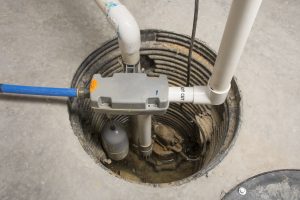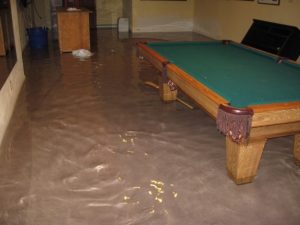You don’t have to live anywhere near a body of water to experience a flooded basement. A heavy rainstorm and a sump pump that stops working at the wrong time can result in flooding in your home. Sump pump failure is a common problem for homeowners, but most people don’t realize it until it’s too late. Fortunately, most of the problems leading to sump pump failure can be prevented or repaired as part of preventative maintenance. This list of seven common reasons for sump pump failure and ways to correct them will ensure your pump will be there when you need it.

An Overworked Pump
If you notice your sump pump struggles to remove water during heavy rain, try to remember when you bought it. If you can’t, or if it came with your home, it’s probably old and wearing out. Investing in a new pump is much cheaper than paying for water damage restoration. If you bought one recently and it still struggles to keep up, it might not be strong enough and you may need to buy an additional one, or a more powerful model.
The Pump Works, But There’s No Water
If you hear the motor working, but there’s no water in the sump pump, it either wasn’t installed correctly or it’s not hooked up to the drainage system. It’s important to have the drain tile installed outside, within the sump pit, or along the basement’s lining. If the drainage system is damaged, have a licensed plumber come in to inspect and repair it before the walls crack and become damaged.
A Clogged Pump
There are several things that can cause a sump pump to become clogged:
- Dirt and other kinds of debris can clog the pit.
- The pump’s parts can become dirty and the motor itself clogs when the pit accumulates with silt.
- The power switch can jam if the water level rises.
- Cheaper models can jam as they turn on or off as water levels fluctuate in the pit.
Have a plumber inspect the pump to see if it should be repaired or replaced. Be sure the pit is properly covered at all times to prevent debris from entering.
Clogged Discharge Lines
Sump pumps move water from basements through the discharge lines so water can drain away from the home. If the lines are twisted, frozen, or clogged with debris, the water has nowhere to go except back to your basement, or worse, through weak points in the line somewhere along the way.
Be sure these lines are kept straight and free of leaves, grass, and other debris. Move the lines before you mow the grass and inspect them regularly for holes and cracks. Add insulation around the pipes before temperatures drop to keep them from freezing.

The Pump Loses Power
Obviously, if the home loses power, the sump pump isn’t going to work no matter how much water is in the basement. A tripped circuit breaker is an easy fix, but a power outage from a storm can last for hours or days. If your basement regularly experiences flooding, consider installing a generator or at least a battery backup for the sump pump to keep the water flowing out until the power comes back on.
The Pump Runs Nonstop
If the pump runs even when there’s no water in the pit, you need to act quickly before the motor burns out. This can be caused by several factors:
- The float switches in inexpensive models can become stuck or tangled.
- The check valve may be missing or broken. This allows the water to flow only one way, out of the pit and away from the basement. If the valve is broken or missing, water can flow back into the pit, only to get pumped back out again, over and over.
- The pump or pit may be too small. If the pump is too small to handle the water coming in, it will run continuously to try to keep up. If the pit is too small, the water will fill it too quickly and the pump will run nonstop.
If your sump pump won’t stop running, have it checked by a licensed plumber.
Defective Pumps
Finally, if you’ve checked everything else and you still can’t figure out why your sump pump won’t work, you may have a defective unit. All you can do is carefully research a new model and test it by filling the pit with water before the warranty expires.
With preventative sump pump maintenance, you can keep your basement dry during the worst summer storms. Be sure to check your pump regularly to keep it in top shape at all times.
If you have experienced flooding in your basement this summer, our professionals at ServiceMaster Kwik Restore can help with our water damage restoration services. We serve residential and commercial clients in Lake, McHenry and Kane Counties in IL and Racine, Kenosha, and Milwaukee Counties in WI who have experienced all types of water damage. Our highly trained technicians use only the most effective equipment and cleaning products available to the industry to extract excess water, dry the affected area, and restore damaged items, even ones you thought were lost forever. We’re on call 24 hours a day, 7 days a week to respond to water emergencies quickly before dangerous mold can start to grow.
Water damage restoration costs vary, depending on the extent of the damage and the amount of restoration needed. According to HomeAdvisor.com, the national average to remove standing water is $2,876. The national average to repair water damage is $2,586.

